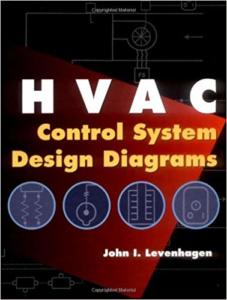HVAC Control System Design Diagrams
HVAC Control System Design Diagrams
HVAC Control System Design Diagrams by John I. Levenhagen. This handbook is intended to be a design manual for the practicing design engineer who is interested in historical or typical ways to control commercial HVAC systems. The book presents generic systems sketches with diagram descriptions and suggestions for further research and other ways to control a particular system. The text is broken down into three basic divisions that classify, as much as possible, the equipment used in commercial HVAC systems. The divisions are:
You can also Read HVAC Advanced Simulation Guidebook Volume 2
HVAC Control System Design Diagrams
SECTION I PRIMARY SYSTEMS
1 Hot Water Boilers
2 Steam Boilers
3 Heat Exchangers
4 Dual CW IHW Piping Systems
5 Constant Volume CW /HW Piping Systems
6 Variable Volume CW/HW Piping Systems
7 Chiller Controls
8 Miscellaneous Controls
SECTION II TERMINAL SYSTEMS
9 Radiation
10 Fan Coil Units
11 Induction Unit
12 Unit Ventilators (UV)
13 Unit Heaters
14 Radiant Systems
15 VAV Box Controls.
No more useful reference for the designer or specifier of HVAC control systems exists than this complete “cookbook” of generic segments and sequences. This indispensable professional compendium gives you a broad array of diagrams that provides everything you need to design controls for an in-place or in-plan HVAC system; offers ready-to-go details for retrofitting, updating, or designing controls for altered systems; allows clear comparisons among commercial control systems; shows you frequently-made and useful modifications to controls; demonstrates how to create controls for peak efficiency, air quality, and energy conservation; covers air handling, terminal, and primary systems; offers sequences and segments for virtually any HVAC system need; and shows you how standard control algorithms work in particular systems. These highly useful control diagrams, many of them comparable to commercially available models, let you design or specify needed configurations in the most efficient manner possible.

Comments are closed.